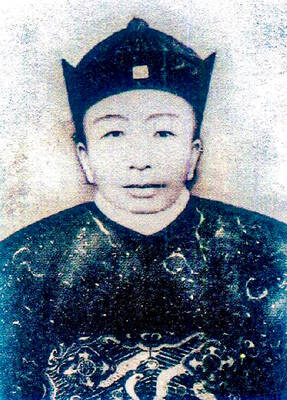What a classic showdown of opposites for the best-actress Academy Award: Reese Witherspoon as country singer June Carter in Walk the Line against Felicity Huffman as a man undergoing a sex change in Transamerica.
The two have dominated Hollywood's awards season over their fellow nominees, Judi Dench in Mrs. Henderson Presents, Keira Knightley in Pride and Prejudice and Charlize Theron in North Country.
At the Golden Globes, Witherspoon took best actress in a musical or comedy and Huffman won for dramatic actress.

PHOTO: AP
Witherspoon's win over Huffman at the Screen Actors Guild (SAG) Awards seems to give her the Oscar edge. And it doesn't hurt Witherspoon's chances that Walk the Line is a US$100 million hit, while Transamerica is a modest arthouse success.
But the Oscars have a history of honoring the little-seen gender-bending flick over the big, splashy hit. Just ask Annette Bening and Hilary Swank.
Six years ago, Bening was the favorite as a caustic suburban wife in the wildly popular American Beauty. Like Witherspoon, Bening had won the Golden Globe for best actress in a musical or comedy and the SAG prize. Like Huffman, Swank had earned the Golden Globe for dramatic actress as a woman impersonating a man in the small art-house hit Boys Don't Cry.
On Oscar night, Swank won.
This year's nominations were the first for both Witherspoon, a Hollywood marquee name whose hits include Legally Blonde and Sweet Home Alabama, and Huffman, a respected stage performer who was largely a bit player on screen until her TV success with Desperate Housewives.
In the road-trip tale Transamerica, Huffman is a marvel of tics, shy glances, awkward posture and heartbreaking melancholy that underlies the sunny surface dispo-sition of a man on the verge of becoming the woman she always wanted to be.
It was the first film lead Huffman had ever been offered, and she has worked tirelessly to get Transamerica, shot on a tiny US$1 million budget, seen as widely as possible.
Two nominees already have Oscars, Theron as best actress for Monster and Dench as supporting actress for Shakespeare in Love.
Theron is an iron-willed tiger in North Country as a single mom who fights back against sexual harassment by male co-workers at a Minnesota mining company.
Before her remarkable transformation in Monster, Theron was known more as a gorgeous face than a serious actress, despite a solid performance in The Cider House Rules and twice co-starring in Woody Allen films.
With her second nomination in three years, Theron has established herself as a Hollywood heavyweight.
A five-time nominee, Dench is a perpetual heavyweight whether in Oscar-nominated roles for Mrs. Brown, Iris and Chocolat or playing spymaster M in the James Bond movies.
In Mrs. Henderson Presents, Dench is a delightful mix of dictatorial derision and fickle fancy, playing a society widow who launches a nude stage revue in prudish 1930s London.
Dench had a scene-stealing role opposite first-time nominee Knightley in Pride and Prejudice, the Jane Austen adaptation that was a throwback to old-fashioned period romances without a trace of modern cynicism.
A rising star best known for the British hit Bend It Like Beckham and the blockbuster Pirates of the Caribbean: The Curse of the Black Pearl, Knightley was luminous as Austen's heroine, a sly, wry, ahead-of-her-time woman who bucks her mother's efforts to marry her off for money instead of love.

The canonical shot of an East Asian city is a night skyline studded with towering apartment and office buildings, bright with neon and plastic signage, a landscape of energy and modernity. Another classic image is the same city seen from above, in which identical apartment towers march across the city, spilling out over nearby geography, like stylized soldiers colonizing new territory in a board game. Densely populated dynamic conurbations of money, technological innovation and convenience, it is hard to see the cities of East Asia as what they truly are: necropolises. Why is this? The East Asian development model, with

June 16 to June 22 The following flyer appeared on the streets of Hsinchu on June 12, 1895: “Taipei has already fallen to the Japanese barbarians, who have brought great misery to our land and people. We heard that the Japanese occupiers will tax our gardens, our houses, our bodies, and even our chickens, dogs, cows and pigs. They wear their hair wild, carve their teeth, tattoo their foreheads, wear strange clothes and speak a strange language. How can we be ruled by such people?” Posted by civilian militia leader Wu Tang-hsing (吳湯興), it was a call to arms to retake

This is a deeply unsettling period in Taiwan. Uncertainties are everywhere while everyone waits for a small army of other shoes to drop on nearly every front. During challenging times, interesting political changes can happen, yet all three major political parties are beset with scandals, strife and self-inflicted wounds. As the ruling party, the Democratic Progressive Party (DPP) is held accountable for not only the challenges to the party, but also the nation. Taiwan is geopolitically and economically under threat. Domestically, the administration is under siege by the opposition-controlled legislature and growing discontent with what opponents characterize as arrogant, autocratic

When Lisa, 20, laces into her ultra-high heels for her shift at a strip club in Ukraine’s Kharkiv, she knows that aside from dancing, she will have to comfort traumatized soldiers. Since Russia’s 2022 invasion, exhausted troops are the main clientele of the Flash Dancers club in the center of the northeastern city, just 20 kilometers from Russian forces. For some customers, it provides an “escape” from the war, said Valerya Zavatska — a 25-year-old law graduate who runs the club with her mother, an ex-dancer. But many are not there just for the show. They “want to talk about what hurts,” she